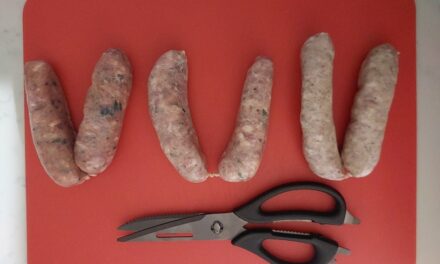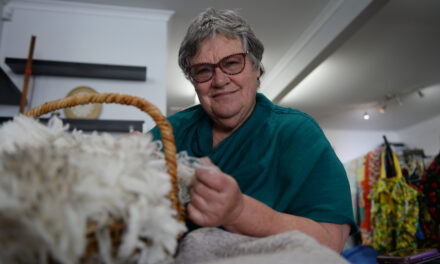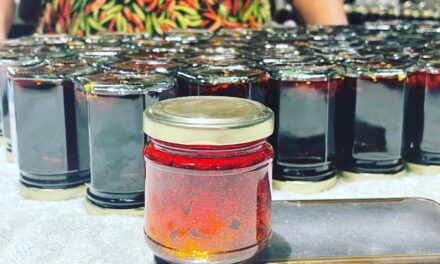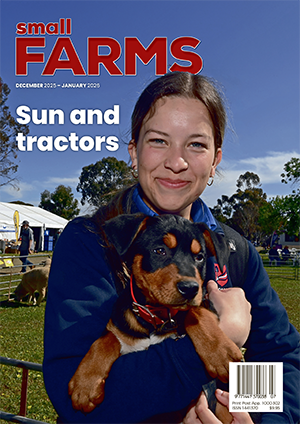LYNN BAIN is asking readers to try a taste test of different cuts of topside. And she’s also pretty serious about mustard.
This article focuses our attention on the use of mustard as a hero cooking ingredient when braising.
As a secondary curiosity, we braise two differing versions of topside steak; one cut along the grain, the other is cut across the grain. Then we compare them after cooking — so we are really having a parallel tasting of the different cuts of topside.
I have not included vegetables to the braising liquid because this recipe is all about the meat. However you could add the usual suspects of onion, golden shallot, carrot, celery, parsnips, etc to the braising liquid.
The two different steaks were cooked separately and the ingredients in the list (apart from the steaks) are for one steak only. Accordingly the photograph shows ‘double’ the ingredients in order to cook two steaks.
Handy hint one: You could substitute your favourite mustard for the Dijon that I’ve used. Wholegrain mustard is wonderful, adding both mustardy flavour and a textural bite of the mustard seeds. Other options include hot English mustard, American mustard and/or even a sweet mustard.
Handy hint two: I have used white wine in the following recipe, however you could use either red wine or port instead. In fact, any flavour liquid that suits your palate is a viable option to consider.
Handy hint three: This recipe concept can be cooked in many ways including the pots/pans approach shown in this article (with a lid), kitchen oven, broiler, crockpot/slow-cooker, pressure cooker and/or a camp oven over a gentle fire/hot coals.
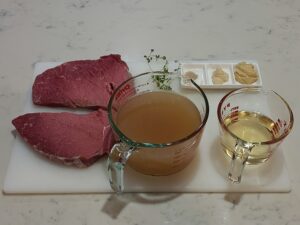
Ingredients
BRAISED TOPSIDE STEAK
INGREDIENTS
2 topside steaks, cut along different axes if you are doing a comparison (it’s a conversation starter)
freshly ground salt and pepper
1 tsp garlic paste
1 tbsp (or so) of Dijon mustard
½ cup white wine
2 cups beef stock
2-3 sprigs fresh thyme
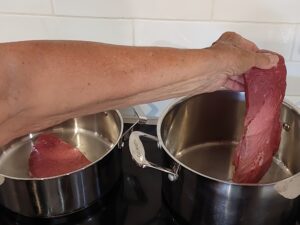
Step 1: Heat a little cooking oil over a low to medium heat in each of the pots. Add one steak to each pot.
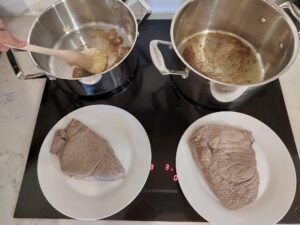
Step 2: Then remove them from the pot/pan and place them onto individual plates while you prepare the braising liquid(s).
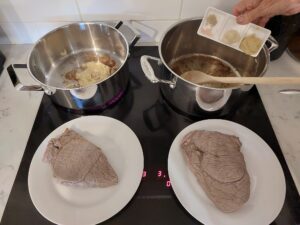
Step 3: Lower the heat under the pans. Now add the salt (pink in this case), pepper, garlic and mustard to each of the pots and stir.
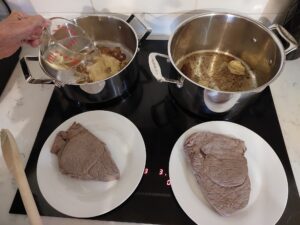
Step 4: White wine being poured into one of the saucepans.
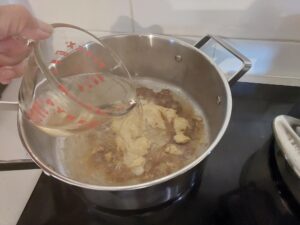
Step 5: A close up of the white wine being poured into the first saucepan.
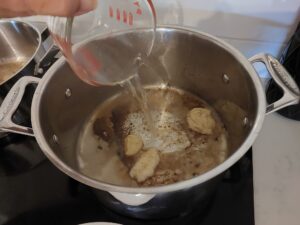
Step 6: Then pour the remaining white wine into the other saucepan. Stir gently through the mustard mixture.
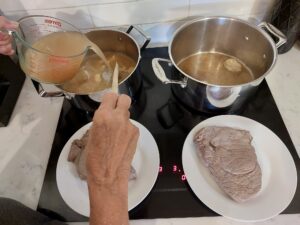
Step 7: Now pour the beef stock into the saucepans.
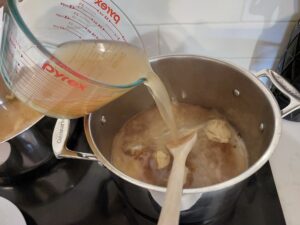
Step 8: Pour the remaining beef stock into the second saucepan and again, stir gently to incorporate with the other ingredients.
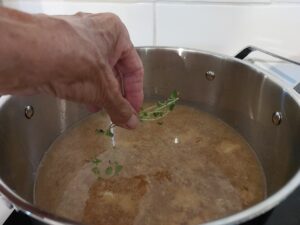
Step 9: Add the fresh thyme sprigs to each of the saucepans.
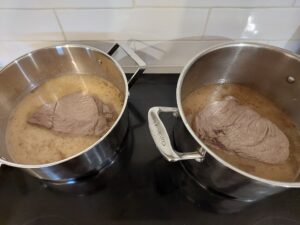
Step 10: After preparing the braising liquid and cooking it through for few minutes while stirring, return the steaks to their individual pots (saucepans).
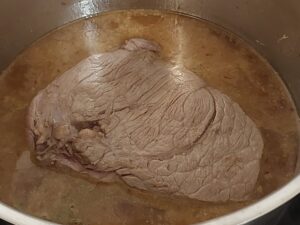
Step 11: A close-up of a topside steak in the braising liquid before popping the lid on the saucepan and simmering on a gentle heat for about an hour.
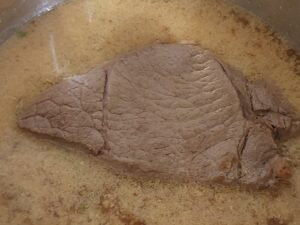
Step 12: Do exactly the same to the other steak.
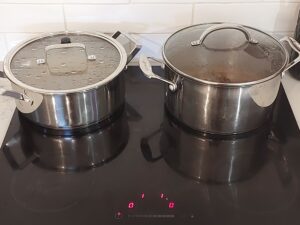
Step 13: Now place the lids onto your cooking vessels and simmer them with a gentle heat for about an hour (test it for yourself as your steaks cook, in this instance the steaks were ready for the plate in exactly 55 minutes. I used the skewer test; at 55 minutes the skewer easily penetrated the steaks).
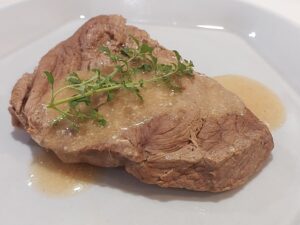
Step 14: The end result is a flavoursome steak that is easy to chew. My recommendation is to serve it with a gravy reduction or sauce. Now for the verdict – the first piece that Steve sliced from the roast was definitely easier to chew no matter which way we both sliced it after cooking. I would say that the difference is remarkable – it really does pay to study the grain of your meat and cut the steaks accordingly.

